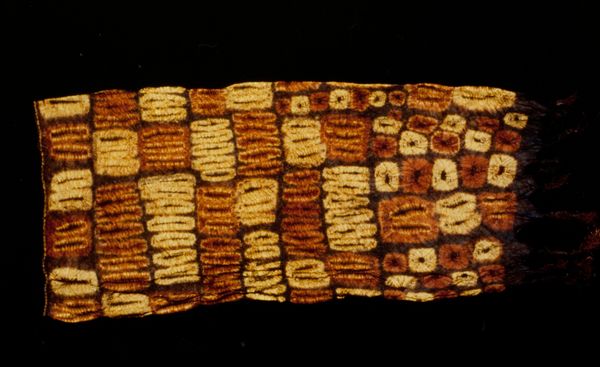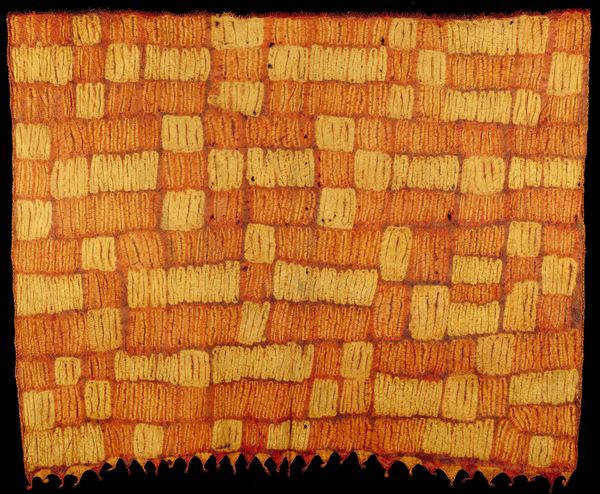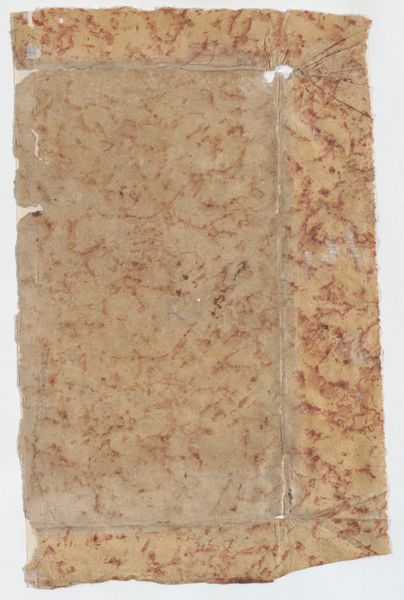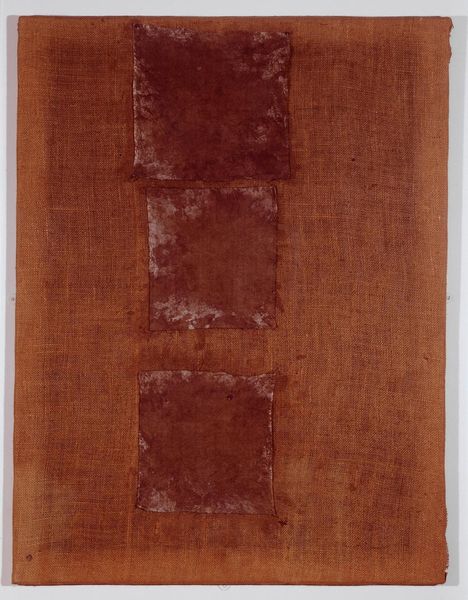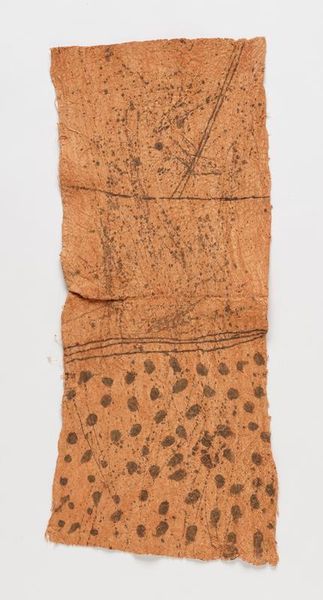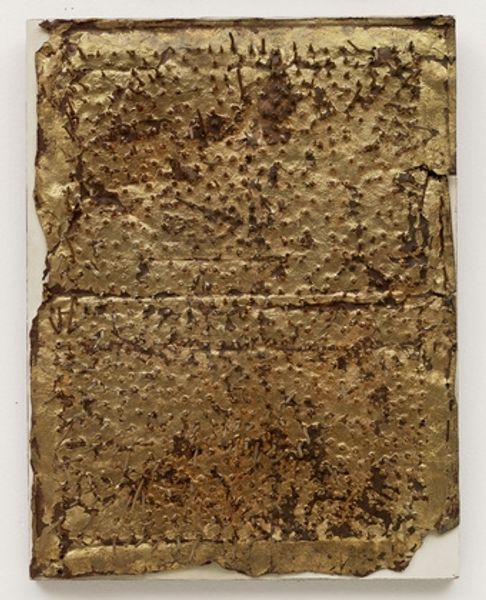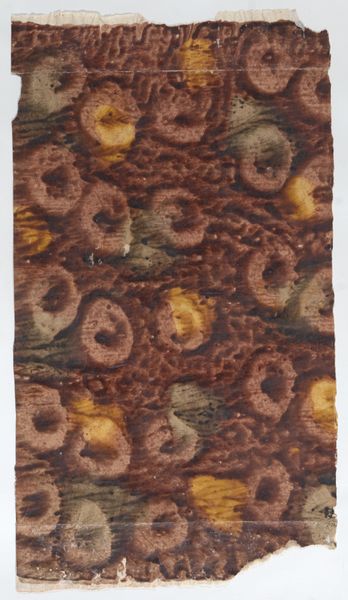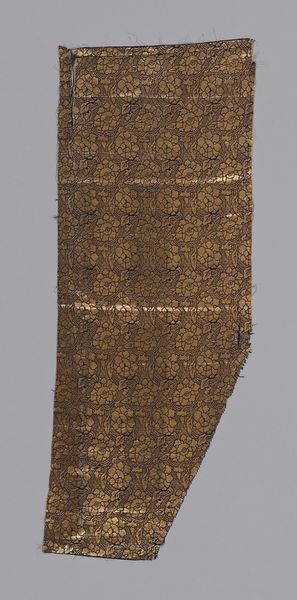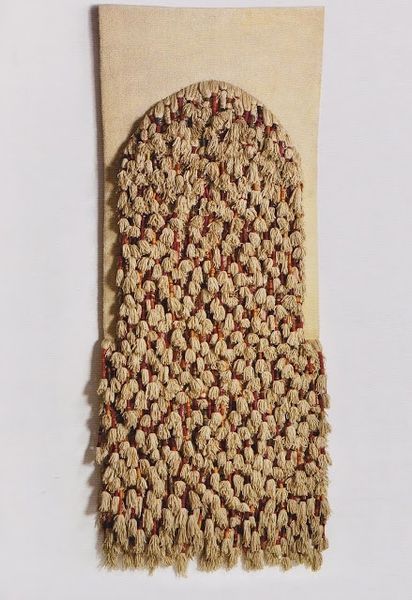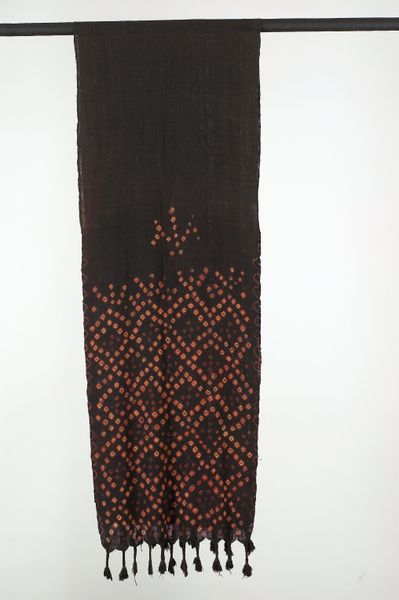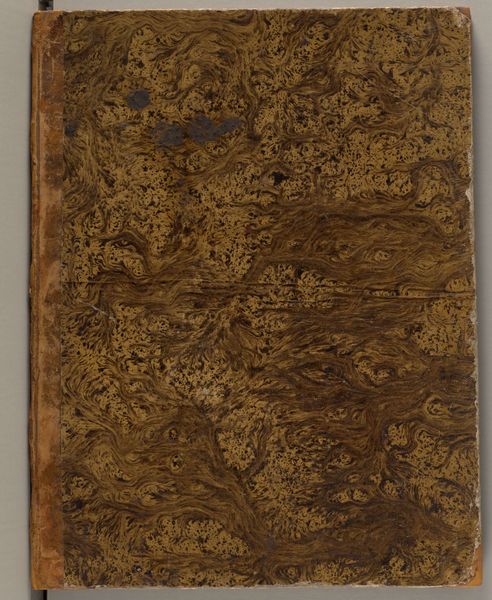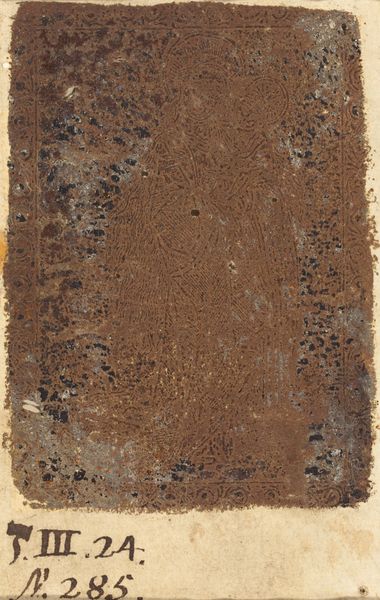
fibre-art, textile
#
fibre-art
#
textile
#
organic pattern
Dimensions: 45 x 12 3/8 in. (114.3 x 31.43 cm)
Copyright: Public Domain
This skirt, made by an anonymous artist, is a beautiful example of material exploration and the joy of process. The warm palette of oranges and yellows gives it a sun-drenched, earthy feel. Up close, you can see the textures—the way the fabric bunches and gathers, creating these incredible ridged patterns. Each ridge tells a story of the hand that crafted it, the tension and release, the rhythm of repetition. The lower section breaks out into a field of circular motifs, like the sun bursting through the horizontal bands. It's almost like looking at a landscape, with layers of earth and sky. It reminds me of Sheila Hicks, who also blurred the lines between weaving, sculpture, and painting. Ultimately, this skirt is a reminder that art is everywhere, in everything, waiting to be discovered. It’s not about perfection, but about the beauty of the imperfect, the handmade, and the deeply personal.
Comments
minneapolisinstituteofart almost 2 years ago
⋮
Raffia cloth is a very labor-intensive textile to produce, because of the lengthy process to prepare the fibers from raffia palm leaves. Dida garments are exceptional for their technique, which requires the interlacing of three sets of raffia threads. The threads are kept in tension by a loop of fiber held by the weaver's foot - no loom is used. This technique produces a tube-shaped cloth, which is adorned using a tie and dye technique. The yellow and red colors are obtained from plant roots, and black is made from combining minerals and leaves. The crinkled texture is left unsmoothed, perhaps to complement the wearer's scarification. Among the Dida people, raffia cloth was associated with status, wealth, and power, whereas common people used to dress in beaten barkcloth.
Join the conversation
Join millions of artists and users on Artera today and experience the ultimate creative platform.
